High Power UV LED 395nm Viewing Angle(Directivity): typical 55° , specialized in UV Ink Curing, large printing press, UV LED of rotary press curing light source.
model no. :
395nm UV LED 3W 1300mWBrand:
LGport of dispatch :
SHENZHENPayment :
T/Toriginal region :
CHINALead Time :
The Same DayThe applications of 395nm UV LED 3W 1300mW Used for UV Printing Coating UV Torch are UV Curing, UV Ink Curing, Photo-Catalyst, Sensor Light, etc..
Features
- Surface Mount Type : 3.40×3.40×3.34 (L×W×H, Unit : mm)
- Viewing Angle(Directivity) : Typical 55°
- Soldering Methods : Pb-Free IR-Reflow Soldering
Outline Dimensions
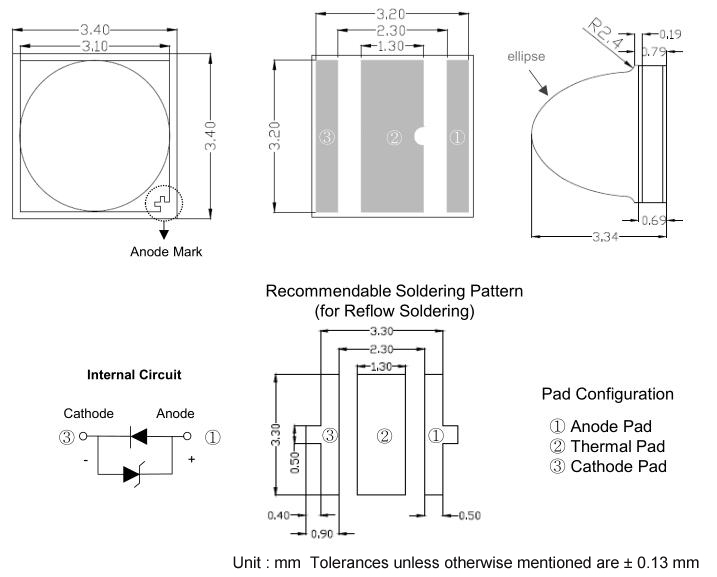
Absolute Maximum Ratings
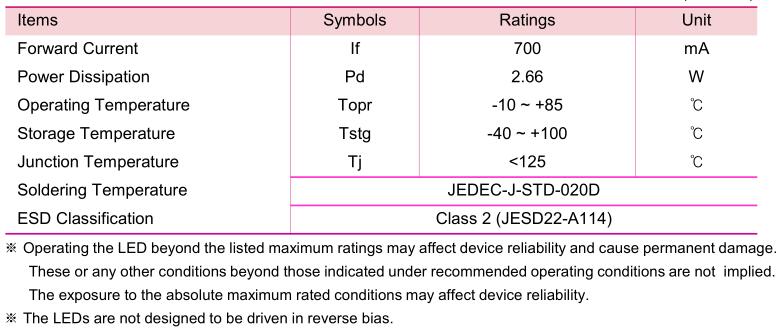
Electro-Optical Characteristics
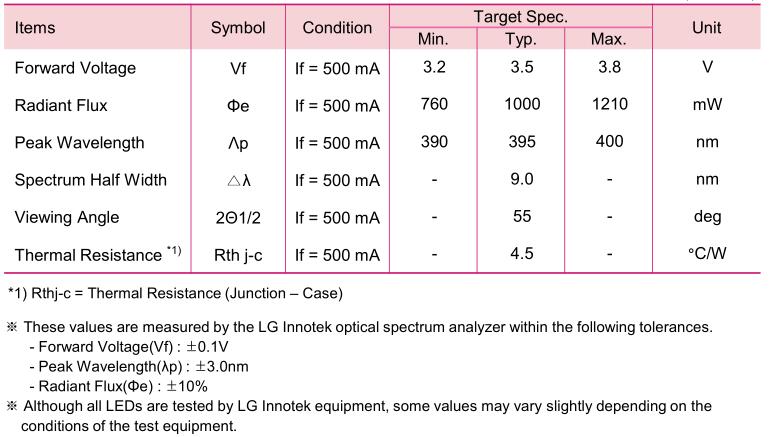
Bin Structures
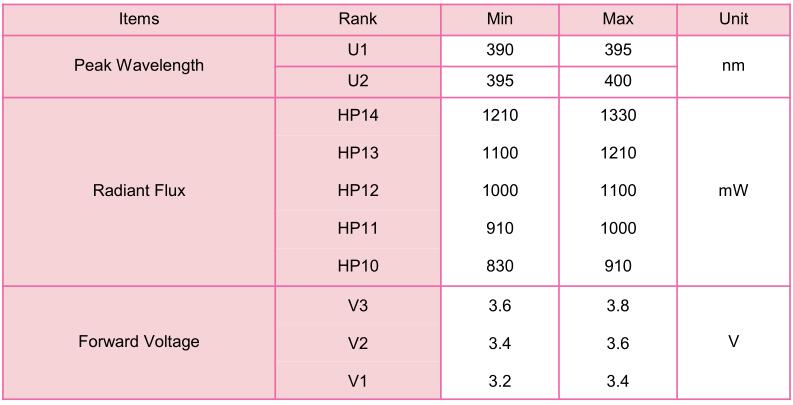
※ Forward Current = 500mA
※ Rank name method : Please refer to the following example
Rank Name : U1-HP12-V2
- Peak Wavelength = U1
- Radiant Flux = HP12
- Forward Voltage = V2
Reliability Test Items and Conditions
1. Failure Criteria

2. Reliability Test
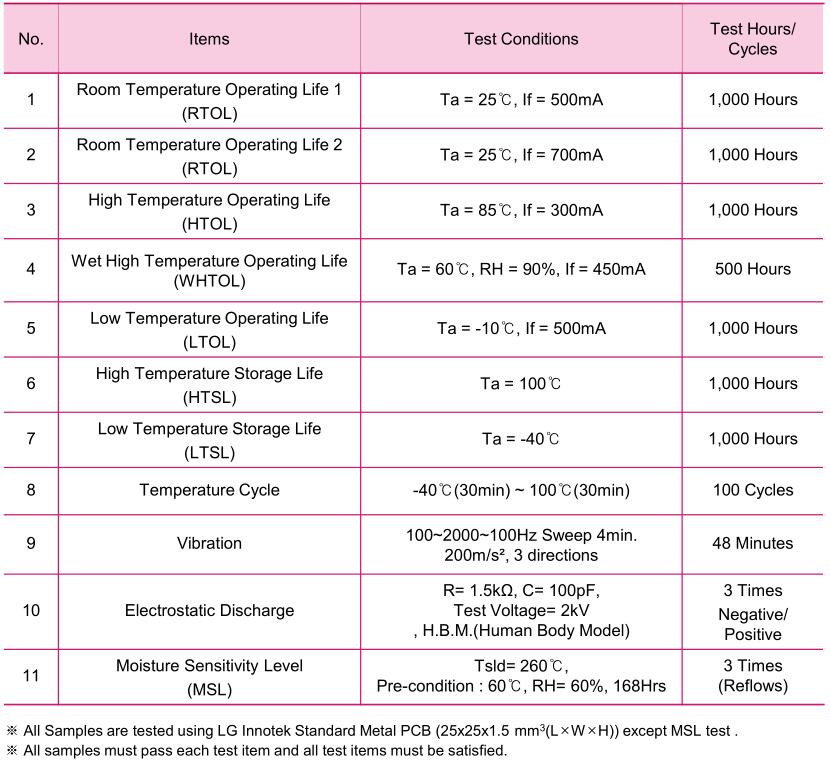
Cautions on Use
2. During Storage

-. The LEDs should be stored in clean environment. If the LEDs are stored for 3 months or more after being shipped from LGIT, a sealed container with a nitrogen gas should be used for storage.
-. When storing the LEDs after opening aluminum bag, reseal with a moisture absorbent material inside
3. During Usage
-. The LED should avoid direct contact with hazardous materials such as sulfur, chlorine, phthalate, etc.
-. The metal parts on the LED can rust when exposed to corrosive gases. Therefore, exposure to corrosive gases must be avoided during operation and storage.
-. The silver-plated metal parts also can be affected not only by the corrosive gases emitted inside of the end-products but by the gases penetrated from outside environment.
-. Extreme environments such as sudden ambient temperature changes or high humidity that can cause condensation must be avoided.
4. Cleaning
-. Do not use brushes for cleaning or organic solvents (i.e. Acetone, TCE, etc..) for washing as they may damage the resin of the LEDs.
-. Isopropyl Alcohol(IPA) is the recommended solvent for cleaning the LEDs under the following
conditions. Cleaning Condition : IPA, 25℃ max. × 60sec max.
-. Ultrasonic cleaning is not recommended.
-. Pretests should be conducted with the actual cleaning process to validate that the process will not damage the LEDs.
6. Static Electricity
-. Wristbands and anti-electrostatic gloves are strongly recommended and all devices, equipment and machinery must be properly grounded when handling the LEDs, which are sensitive against static electricity and surge.
-. Precautions are to be taken against surge voltage to the equipment that mounts the LEDs.
-. Unusual characteristics such as significant increase of current leakage, decrease of turn-on voltage, or non-operation at a low current can occur when the LED is damaged.
8. Recommended Circuit
-. The current through each LED must not exceed the absolute maximum rating when designing the circuits.
-. In general, there can be various forward voltages for LEDs. Different forward voltages in parallel via a single resistor can result in different forward currents to each LED, which also can output different luminous flux values. In the worst case, the currents can exceed the absolute maximum ratings which can stress the LEDs. Matrix circuit with a single resistor for each LED is recommended to avoid the luminous flux fluctuations.
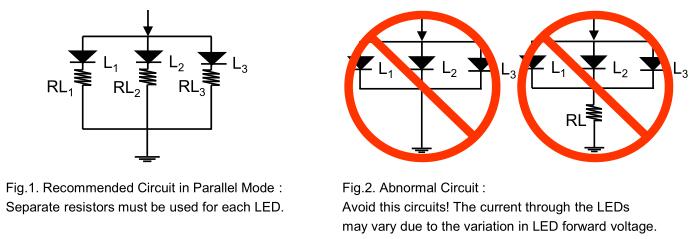
-. The driving circuits must be designed to operate the LEDs by forward bias only.
-. Reverse voltages can damage the zener diode, which can cause the LED to fail.
-. A constant current LED driver is recommended to power the LEDs.
9. Soldering Conditions
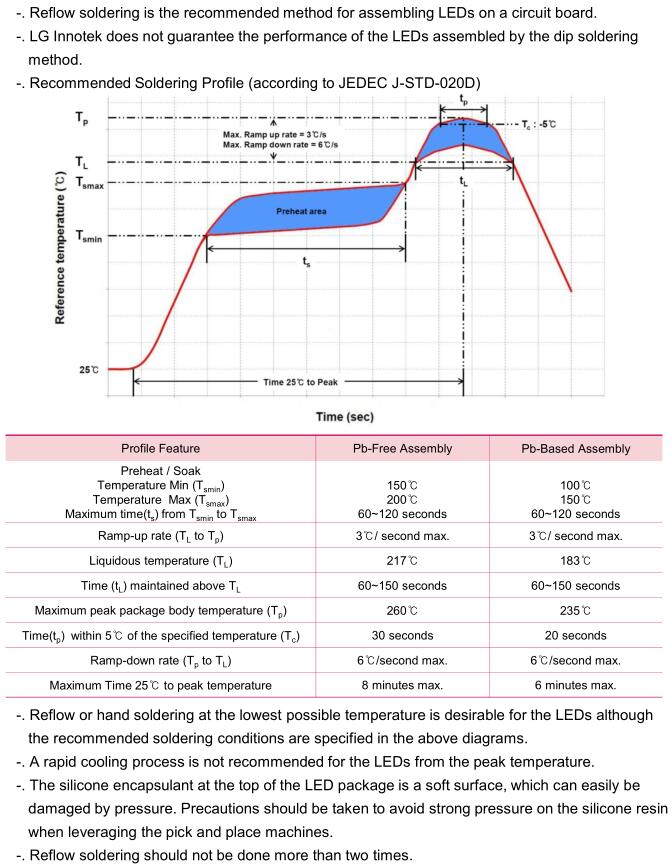
10. Soldering Iron
-. The recommended condition is less than 5 seconds at 260℃.
-. The time must be shorter for higher temperatures. (+10℃ → -1sec).
-. The power dissipation of the soldering iron should be lower than 15W and the surface temperature of the device should be controlled at or under 230℃.
11. Eye Safety Guidelines
-. Do not directly look at the light when the LEDs are on.
-. Proceed with caution to avoid the risk of damage to the eyes when examining the LEDs with optical instruments.
12. Manual Handling
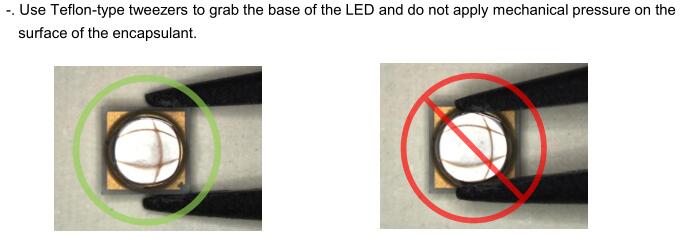
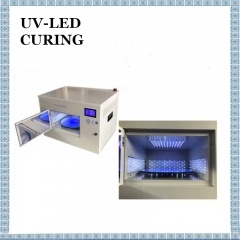 Factory Price LED Curing Box UV Ink Curing Oven UV Chamber
Factory Price LED Curing Box UV Ink Curing Oven UV Chamber
LED Curing Box UV Ink Curing Oven UV Chamber is instantaneous curing, no ozone, environment protection, energy conversation, no mercury.
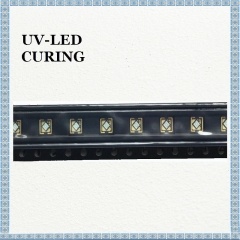 NICHIA UV LED NVSU233B U365nm
NICHIA UV LED NVSU233B U365nm
NICHIA UV LED NVSU233B U365nm is most applied in UV curing, splicing, UV glue, and UV prinying ink curing.
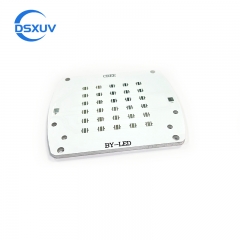 82x66mm 30pcsUV LED Light Source Based Plate
82x66mm 30pcsUV LED Light Source Based Plate
30pcs UV LED Light Source Based Plate, lighting area is 82*66mm, is aluminum material UV LED light source PCB Substrate.
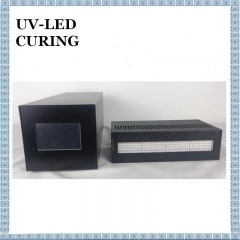 200*20mm Large Area LED UV Curing Machine for Coating Curing LED UV Ink UV Glue Curing
200*20mm Large Area LED UV Curing Machine for Coating Curing LED UV Ink UV Glue Curing
200*20mm Large Area LED UV Curing Machine is no infrared radiation, cold light source, suitable for all types of heat-sensitive material curing.
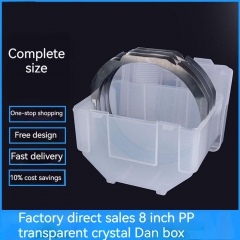 Wafer Carrier White Transparent
Wafer Carrier White Transparent
8-Inch Silicon Wafer Carrier Black/White Transparent PP Material Wafer Shipping Box
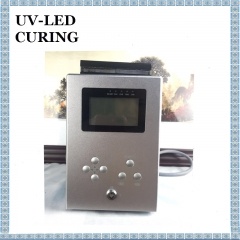 Linear Irradiation 100mm UV LED Light Source UV Glue Curing UV Light Source
Linear Irradiation 100mm UV LED Light Source UV Glue Curing UV Light Source
Linear Type 100mm UV LED Light Source, UV glue fast curing, can cure mobile phone screen, flat, car navigation.